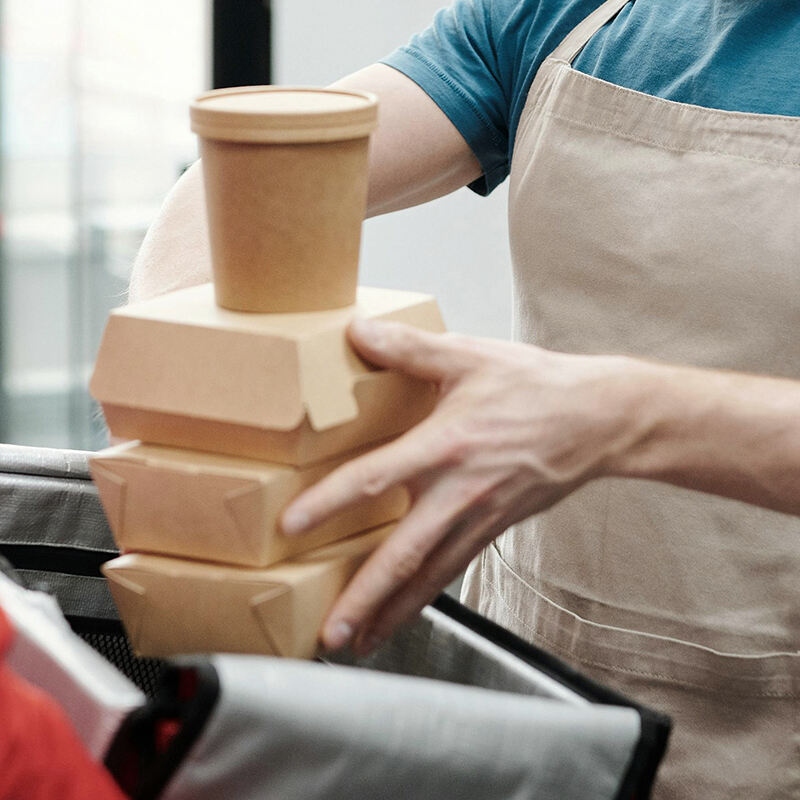Transforming Food Service Through Sustainable Paper Bowl Solutions
The paper bowl industry is experiencing a remarkable transformation, driven by technological advancements, environmental consciousness, and changing consumer preferences. As businesses and consumers increasingly prioritize sustainable packaging solutions, manufacturers are pushing the boundaries of innovation to create paper bowls that are not only eco-friendly but also highly functional and aesthetically pleasing.
Recent developments in material science and manufacturing processes have revolutionized how paper bowls are produced and used. These innovations address crucial aspects such as durability, heat resistance, and environmental impact, while maintaining the practicality that makes paper bowls a popular choice in various settings.
Advanced Material Technologies in Paper Bowl Manufacturing
Bio-Based Coating Breakthroughs
One of the most significant innovations in paper bowl production is the development of bio-based coatings. Traditional paper bowls often relied on petroleum-based materials for water resistance, but new plant-derived alternatives are proving to be just as effective. These natural coatings provide excellent moisture barriers while ensuring the bowls remain fully biodegradable and compostable.
Scientists have successfully created coatings from agricultural byproducts, such as corn starch and cassava roots. These innovations not only enhance the environmental profile of paper bowls but also improve their performance in holding hot and cold foods.
Reinforced Fiber Technologies
Advanced fiber engineering has led to stronger, more resilient paper bowls. Manufacturers now incorporate specialized cellulose fibers that increase structural integrity without adding synthetic materials. These reinforced fibers allow paper bowls to handle heavier contents while maintaining their eco-friendly characteristics.
Some innovative approaches include the use of longer fiber strands and advanced bonding techniques that create a more durable product without compromising on sustainability or increasing production costs significantly.
Smart Design Features and Functionality
Temperature-Responsive Elements
Modern paper bowls are being equipped with smart features that enhance user experience. Temperature-responsive indicators help consumers know when contents are too hot to handle safely. These innovations utilize food-safe thermochromic inks that change color based on temperature, providing a visual safety cue without compromising the bowl's recyclability.
Additionally, new insulation techniques using air-pocket designs and multiple layers help maintain optimal food temperature while keeping the exterior comfortable to hold. These advances make paper bowls increasingly suitable for a wider range of food service applications.
Customizable Structural Elements
Innovative design features now allow paper bowls to adapt to different serving needs. Foldable edges, built-in dividers, and stackable designs are being incorporated without sacrificing the structural integrity of the bowls. These features make paper bowls more versatile while maintaining their essential eco-friendly properties.
Engineers have developed clever scoring patterns that enable bowls to be adjusted in size or compartmentalized, providing flexibility for various portion sizes and meal types. These adaptable designs are particularly valuable in the food service industry where versatility is key.

Sustainable Production Methods
Water-Efficient Manufacturing
Revolutionary water recycling systems and dry-forming technologies are transforming how paper bowls are manufactured. These innovations significantly reduce water consumption in production while maintaining product quality. Some facilities have achieved up to 90% reduction in water usage compared to traditional manufacturing methods.
Advanced filtration systems allow for better water recovery and reuse, while new forming techniques require minimal water input. These improvements not only reduce environmental impact but also lower production costs and increase manufacturing efficiency.
Energy-Optimized Processing
The integration of smart energy management systems and renewable power sources has revolutionized paper bowl production. Manufacturers are implementing heat recovery systems, solar thermal processes, and biomass-powered operations to reduce carbon footprint while maintaining high production standards.
Modern facilities utilize artificial intelligence to optimize energy consumption during different production phases, ensuring maximum efficiency without compromising product quality. These innovations help reduce operating costs while supporting environmental sustainability goals.
Enhanced End-of-Life Solutions
Accelerated Decomposition Technology
New developments in paper bowl composition enable faster biodegradation without leaving harmful residues. Special enzymes and natural additives are incorporated during manufacturing to accelerate the decomposition process once the bowls enter composting facilities.
These innovations ensure that paper bowls break down completely within weeks rather than months, addressing concerns about waste accumulation while maintaining the structural integrity needed during use.
Circular Economy Integration
Advanced recycling technologies now allow paper bowls to be processed more effectively into new products. Specialized sorting systems can better separate different materials, while improved pulping methods enable more efficient fiber recovery and reuse.
Manufacturers are also developing closed-loop systems where used paper bowls can be collected and reprocessed into new packaging products, maximizing resource efficiency and minimizing waste.
Frequently Asked Questions
How do eco-friendly coatings affect paper bowl performance?
Bio-based coatings provide comparable or superior performance to traditional petroleum-based alternatives, offering excellent moisture resistance while ensuring the bowls remain fully biodegradable. These natural coatings are food-safe and maintain structural integrity across a wide temperature range.
What makes modern paper bowls more durable than previous versions?
Advanced fiber engineering, improved bonding techniques, and innovative structural designs contribute to enhanced durability. The integration of longer fiber strands and specialized cellulose materials creates stronger bowls without requiring synthetic reinforcements.
Are smart-feature paper bowls still environmentally friendly?
Yes, smart features like temperature indicators and adaptable designs use food-safe, biodegradable materials that don't compromise the bowl's recyclability or compostability. Manufacturers carefully select additives that align with environmental sustainability goals.
